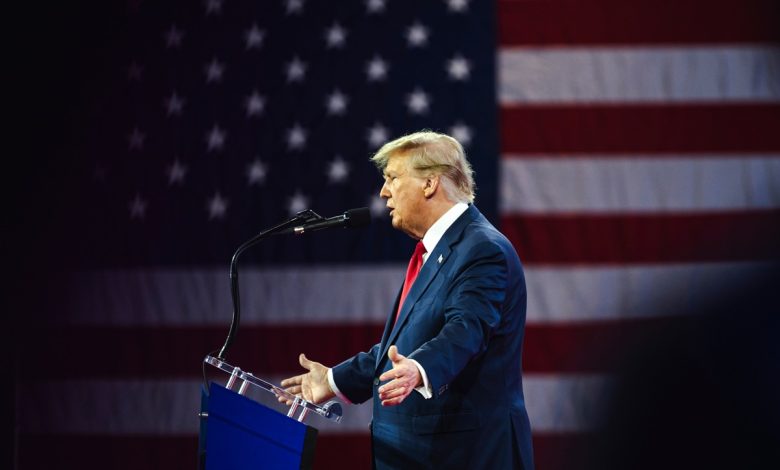
With Donald Trump’s return to the White House following his November 5th victory, what could this mean for the United States, and more specifically, for our portfolio? Will his policies drive the stock markets to new highs, or might his aggressive stances lead to inflation and increased volatility?
Trump has promised to slash taxes and reduce regulations, yet he also proposes aggressive tariffs, stricter immigration policies, and other measures that could reshape the U.S. economic landscape. In this article, we’ll explore what you need to know about Trump’s economic policies and how they could impact your investments in the coming months and years.
Let’s have a look at the key elements:
Tax policies
Trump plans to extend and expand the 2017 Tax Cuts and Jobs Act, which was set to expire in 2025, with added measures:
- Corporate tax rate reduction: A further cut from 21% to 15% for companies that make products in the U.S.
- Elimination of some taxes: Promises eliminating federal taxes on tips, Social Security benefits, and overtime pay.
- Removal of SALT cap: Lifting the $10,000 cap on state and local tax (SALT) deductions could benefit higher earners in high-tax blue states, potentially raising disposable income.
Trade and tariffs
Trade restrictions have been the cornerstone of Trump’s economic strategy:
- Broad tariffs on imports: Either 10% or 20% tariff on all imports and up to 60% tariffs specifically on Chinese goods.
- Penalties for offshoring: Additional tariffs on companies moving manufacturing overseas are designed to encourage local production but could potentially increase consumer costs. For instance, he proposes imposing a 100% or 200% tariff on cars made in Mexico or relocating production from the U.S. to Mexico.
Immigration and labour policy
Stricter immigration policies proposed to impose include:
- Mass deportations and restrictions on mortgages: This could lead to potential labour shortages due to mass deportation and bans on undocumented immigrants obtaining mortgages, even though they only make up a tiny portion of the mortgage market, as claimed by CNN.
- Reduced legal immigration: This could limit workforce growth, impacting industries dependent on immigrant labour, from tech to agriculture, including the housing market.
Energy expansion
Trump aims to increase U.S. energy independence significantly:
- Lower energy prices: Halve the energy costs in his first-year term, with gas prices below US$2 per gallon.
- Expanding drilling and reducing regulations: Increased oil and gas drilling and fewer regulatory barriers for power plants could boost the energy sector. However, some economists have pointed out that presidents do not control oil production, and the U.S. is already pumping more crude oil than any other country in history.
Trump has also suggested plans to replace Federal Reserve officials and pursue more accommodative monetary policies, potentially reducing the Fed’s traditional independence. While Fed Chair Jerome Powell says he wouldn’t resign if Trump asked. Hence, Trump will only get to name a new chairman when Powell’s term expires in May 2026.
Market response
The stock market reacted positively to Trump’s victory, with the S&P 500 gaining over 2% and the Dow Jones climbing nearly 3% in the days following the election. This initial surge reflects investor confidence in Trump’s pro-business stance, likely driven by his focus on tax cuts and deregulation. However, investor enthusiasm may diminish if these policies face implementation hurdles or lead to inflationary pressures.
Potential positive effects on the stock market
While Trump’s policies are broad, several could directly benefit the stock market in the short term:
- Corporate tax cuts: Lower corporate taxes (potentially lowered to 15%) will likely boost profits, making stocks more attractive to investors. Sectors like technology, energy, and manufacturing could see the most benefit.
- Deregulation: Reduced regulations in energy and finance could stimulate growth, especially in industries that have faced high compliance costs in recent years. Less oversight on mergers and acquisitions may fuel market activity, driving up stock valuations in related sectors.
- Consumer spending boost: Trump’s vow to lower gas prices and control inflation (if successful) could put more money in consumers’ pockets, potentially boosting spending and benefiting consumer-driven sectors like retail.
Potential negative effects on the stock market
Trump’s economic policy is a double-edged sword, and several risks could potentially weaken investor sentiment:
- Inflation and interest rates: Trade tariffs, restricted immigration policies, and mass deportations may push prices higher, fuelling inflation. Economists from Goldman Sachs estimated that the proposed tariff and taxes could push inflation to 2.75% to 3% by mid-2026. This could pressure the Federal Reserve to reconsider its cutting stance, potentially slowing economic growth and hurting rate-sensitive sectors like real estate. The probability of future rate cuts in 2025 has decreased significantly, from 70% a month ago to only 28%.
- Impact on real estate and REITs: If inflationary pressures resurge with even greater intensity, it could also drive up the mortgage rate, which may negatively affect real estate investments and REIT performance. This would be incredibly challenging for interest-sensitive stocks.
- Geopolitical and trade tensions: The new tariffs on imports and potential trade conflicts with China may bring sector-specific volatility, especially in industries dependent on global supply chains. The uncertainty of such tensions may discourage business investment and weigh on market stability.
Long-term economic impact
Economists warn that if fully implemented, Trump’s policies could significantly increase the national debt, projected at up to US$7.75 trillion over the next decade. This raises concerns about the long-term stability of U.S. economic growth. While Trump’s policies may boost GDP growth by 0.3% in 2026, they could potentially decline by 0.6% by 2028, as rising debt and inflation could drag on growth potential.
As investors, our outlook will largely depend on Trump’s ability to implement his policies despite potential legislative challenges. Investors would do well to maintain a cautious optimism, focusing on sectors with potential short-term gains (like energy and domestic manufacturing) while being mindful of inflation risks and possible interest rate hikes.
The fifth perspective
In short, Trump’s economic policies promise both opportunities and challenges. Corporate tax cuts, some deregulations, and pro-business policies might present upside potential for the stock market, but inflationary risks and potential trade conflicts could add significant volatility as well. Hence, navigating this landscape will require careful attention to inflationary pressures, policy implementations, and global economic conditions, allowing us investors to balance growth opportunities with defensive strategies.




The mass deportations won’t happen. The USA simply doesn’t have the required manpower, not enough strength in Customs & Border Protection or the Immigration & Naturalization Service. There are an estimated 11 million illegals in the USA, and the estimated cost of a single forced deportation is over US$10,000. So even if it was half of that, it simply ain’t happening. What is far more likely is better border control, and deportation of the worst criminals present in the country illegally. So be prepared for longer lines at US points of entry unless you have an APEC card, or are a US citizen or green card holder (PR).
Those of us who’ve lived in the USA know that most of the illegals are doing the jobs that US citizens just won’t do. That’s waiting tables, cleaning jobs (especially homes), landscape gardening and mowing lawns etc. They also work in hairdressing and nail salons and the “casual adult-entertainment” business etc.
The implications of the incoming administration’s ideas on trade and tariffs should be of far greater concern to everybody.
Thanks for sharing, Jonathan. You’re absolutely right, the logistics and costs of mass deportations make them unlikely on such a scale, and targeted enforcement seems more feasible. As you noted, many of the jobs that U.S. citizens are less inclined to take still need to be filled, making them even hard to replace. A more realistic focus may be on enhancing border security. I agree with you that the trade and tariff policies are a bigger concern, as they could disrupt supply chains and raise costs for businesses and consumers alike. Thanks for highlighting this perspective!